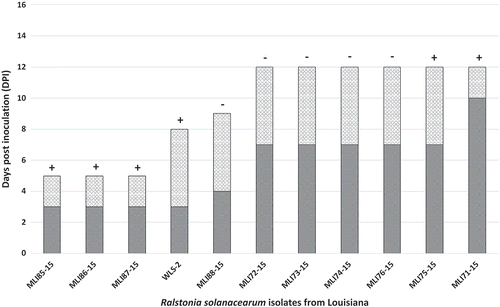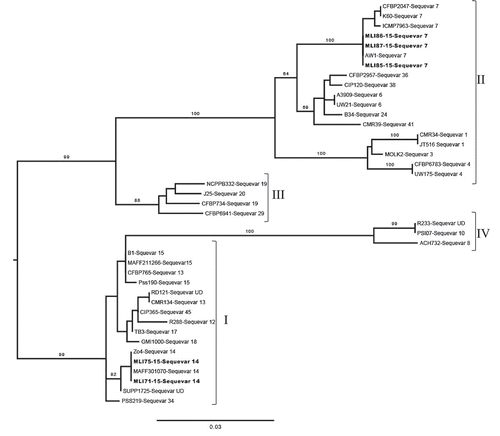Figures & data
Table 1. Genotypic and phenotypic diversity of Ralstonia solanacearum species complex strains from Louisiana.
Table 2. List of Ralstonia solanacearum reference species complex strains used in the phylogenetic analysis.


